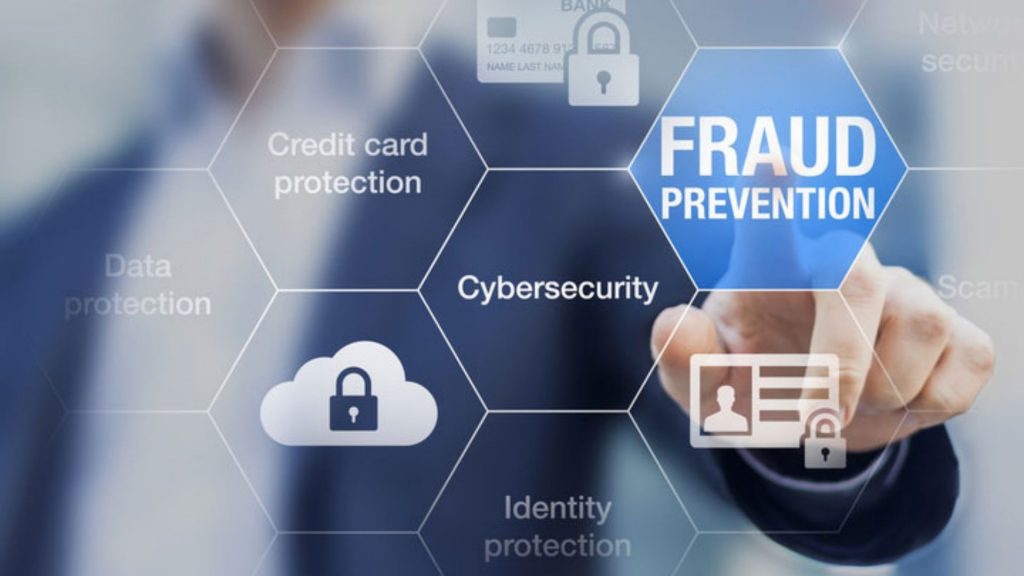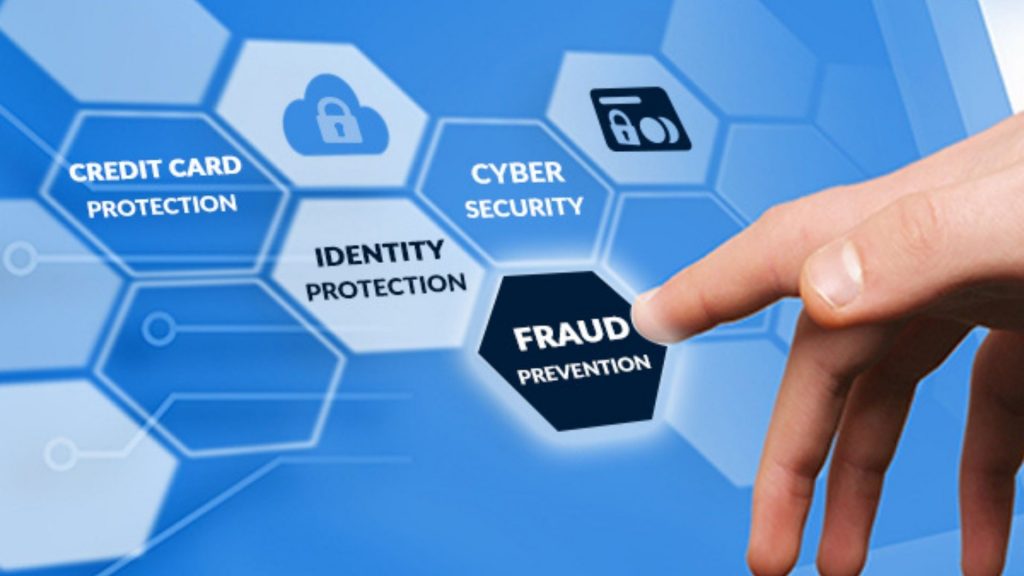La detección del fraude es un conjunto de actividades realizadas para evitar que se obtenga dinero o bienes mediante engaño. Un delito que utiliza el engaño como arma principal se llama fraude. El fraude es una tergiversación deliberada de la verdad o la ocultación de un hecho material que hace que otro actúe en su perjuicio.

Detección del fraude
También incluye cualquier acto intencionado que tenga por objeto privar a otro de bienes o dinero por medios desleales. El fraude puede ser interno (por ejemplo, por parte de empleados, directivos, funcionarios o propietarios de la empresa) o externo (por ejemplo, por parte de clientes, proveedores y otros terceros).
En el mundo actual
Las complejidades del terrorismo patrocinado por el Estado, los delincuentes profesionales y los malos del sótano son cada vez más difíciles de comprender, rastrear, exponer y prevenir. En el mundo actual, la detección del fraude requiere un enfoque integral que relacione los puntos de datos con las actividades para determinar lo que es anormal. Los defraudadores han desarrollado tácticas sofisticadas, por lo que es fundamental estar al tanto de estos enfoques cambiantes para jugar con el sistema.
Los fallos de ciberseguridad suelen permitir actividades fraudulentas. Piense en los servicios financieros o de venta al por menor: antes se consideraba un lujo, pero ahora la supervisión de las transacciones en tiempo real es un requisito, no sólo para las transacciones financieras, sino también para los datos de eventos digitales relacionados con la autenticación, la sesión, la ubicación y el dispositivo.
Triángulo del fraude
No hay una única razón detrás del fraude, y cualquier explicación del mismo debe tener en cuenta varios factores. Desde la perspectiva del defraudador, es necesario tener en cuenta varios factores. Estos incluyen: la motivación de los delincuentes potenciales, las condiciones bajo las cuales los delincuentes pueden racionalizar sus delitos, las oportunidades para cometer delitos, la idoneidad percibida de los objetivos para el fraude, la capacidad técnica del estafador, el riesgo esperado y real de descubrimiento después de que se haya llevado a cabo el fraude, las expectativas de las consecuencias del descubrimiento y las consecuencias reales del descubrimiento.
Uno de los modelos más populares utilizados en la auditoría para explicar por qué se comete el fraude es el llamado Triángulo del Fraude. Los auditores utilizan el triángulo del fraude libremente al examinar el riesgo de fraude en cualquier organización.
El triángulo del fraude ayuda a identificar los motivos del fraude, como los problemas financieros que son difíciles de compartir. Como su nombre indica, el triángulo del fraude tiene tres puntos o elementos denominados presión, oportunidad y racionalización. Según esta teoría, siempre que se produce un fraude están presentes los tres elementos, por lo que anticiparse a ellos ayuda a contrarrestar el fraude…
Presión
Una persona puede verse presionada o motivada a cometer un fraude debido a un problema financiero personal, como una gran deuda de juego. A veces, los problemas en el trabajo provocan esta presión. Por ejemplo, un individuo puede estar motivado para realizar un fraude porque cree que se le han asignado objetivos de rendimiento que no podrá cumplir.
Sin embargo, el individuo no cree que pueda resolver sus problemas legalmente o que pueda hablar con otras personas que puedan ayudarle, por lo que recurren a medios injustos.
Oportunidad
La persona que planea cometer el fraude descubre una debilidad de control interno y cree que nadie se dará cuenta si se lleva el dinero. Las deficiencias de control interno, como la falta de supervisión, son una oportunidad para robar. El defraudador comienza robando una pequeña cantidad de dinero y, si no le pillan, lo más probable es que robe cantidades aún mayores.
Las posibilidades de robo pueden reducirse desarrollando y aplicando controles internos eficaces.
Racionalización
La racionalización implica dos aspectos. Desde la perspectiva del defraudador, la ganancia de cometer un fraude debe ser mayor que el riesgo de ser descubierto.
El defraudador debe tener una justificación interna para cometer el fraude. Por ejemplo, el defraudador puede pensar que la empresa no echará de menos el dinero o que la organización no le paga lo suficiente. El individuo puede incluso racionalizar el fraude diciéndose a sí mismo que devolverá el dinero.
Detección
Por su naturaleza, el fraude es difícil de detectar, y algunos fraudes nunca se detectan. Las personas que cometen fraudes planean desde el principio mantener sus acciones ocultas hasta que consigan sus objetivos y durante el mayor tiempo posible después, pero eso no significa que las empresas deban tirar la toalla y aceptar el fraude como un coste de hacer negocios.
A menudo, el fraude es obvio para los colegas del defraudador después del evento. Cuando uno mira hacia atrás a los indicadores y comportamientos, con frecuencia destaca todos los indicadores de fraude más comunes.
Muchos fraudes se descubren accidentalmente o como resultado de la información recibida. En muchos casos, las pérdidas son mayores porque los empleados de todos los niveles ignoran lo evidente. Una organización debe contar con mecanismos de notificación adecuados para facilitar que todos denuncien el fraude o las irregularidades en la organización.

Cómo funciona la detección del fraude
Muchos delincuentes cometen fraudes aprovechando lagunas y probando patrones. Para descifrar el código de acceso de una tarjeta de crédito, un hacker podría crear un programa informático que probara aleatoriamente miles de pines de 4 dígitos por segundo. Debido a que el fraude se comete con frecuencia a través de patrones, la detección de fraude emplea inteligencia artificial para buscar estos patrones y envía una alerta cuando se detecta uno.
Dependiendo de la gravedad de la alerta, puede bloquear inmediatamente toda la actividad o enviar la alerta a un evaluador humano para que la investigue. Por ejemplo, para aprobar transacciones bancarias sospechosas, su banco puede enviarle alertas por mensaje de texto.
Técnicas de detección del fraude
Dado que el fraude suele implicar múltiples métodos repetidos, la búsqueda de patrones es un enfoque general para la detección del fraude. Los analistas de datos, por ejemplo, pueden prevenir el fraude en los seguros desarrollando algoritmos para detectar patrones y anomalías.
La detección del fraude puede distinguirse mediante la aplicación de técnicas de análisis de datos estadísticos o de inteligencia artificial (IA).
Las técnicas de análisis de datos estadísticos incluyen:
- determinación de los parámetros estadísticos
- examen de regresión
- modelos y distribuciones de probabilidad
- comparación de datos
Entre las técnicas de IA utilizadas para detectar el fraude se encuentran:
- La minería de datos es el proceso de categorización, agrupación y segmentación de datos para buscar patrones en millones de transacciones y detectar el fraude.
- Las redes neuronales aprenden patrones de aspecto sospechoso y los utilizan para seguir detectándolos.
- El aprendizaje automático detecta las características del fraude automáticamente.
- El reconocimiento de patrones detecta clases, grupos y patrones de comportamiento sospechoso.
Tipos de fraude
El fraude puede cometerse de diversas maneras y en diversos entornos. El fraude puede cometerse en los sectores de la banca, los seguros, la administración y la sanidad, por ejemplo.
La apropiación de cuentas de clientes es un tipo común de fraude bancario. Esto ocurre cuando alguien utiliza bots para obtener acceso no autorizado a la cuenta bancaria de la víctima. Otros tipos de fraude bancario son el uso de aplicaciones maliciosas, la creación de identidades falsas, el blanqueo de dinero, el fraude con tarjetas de crédito y el fraude móvil.
El fraude en los seguros incluye el fraude en el desvío de primas (el robo de primas de seguros) y el churning gratuito (la negociación excesiva por parte de un corredor de bolsa para maximizar las comisiones). El desvío de activos, el fraude en la indemnización de los trabajadores, el fraude en los accidentes de tráfico, el fraude en los coches robados o dañados y el fraude en los incendios de viviendas son ejemplos de fraude al seguro. Todos los fraudes a los seguros están motivados por el beneficio económico.
El fraude gubernamental consiste en defraudar a organismos federales como los Estados Unidos. Los departamentos de Salud y Servicios Humanos, Transporte, Educación y Energía son algunos ejemplos. Facturar por procedimientos innecesarios, cobrar de más por artículos que cuestan menos, proporcionar equipos viejos cuando se facturan por equipos nuevos, y reportar horas trabajadas por un trabajador que no existe, son todos ejemplos de fraude gubernamental.
El fraude farmacéutico y médico, así como el fraude al seguro, son ejemplos de fraude sanitario. Cuando alguien defrauda a una aseguradora o a un programa gubernamental de asistencia sanitaria, está cometiendo un fraude sanitario.
Empresas que se benefician de la detección del fraude
Las empresas más vulnerables al fraude financiero deberían aplicar al menos algunas medidas de detección de fraudes. Los bancos, las empresas de tarjetas de crédito, las compañías de seguros y las empresas que realizan importantes transacciones en línea son ejemplos de ello. Aunque cualquier negocio es vulnerable al fraude, las empresas con grandes importes de transacciones, un alto volumen de operaciones o modelos de negocio sin contacto son más vulnerables.
Funciones avanzadas de detección del fraude
Las funciones disponibles para los empresarios han crecido a la par que el avance de la tecnología de detección del fraude. Muchos sistemas de detección de fraude incluyen ahora una serie de filtros que pueden identificar rápidamente las transacciones inusuales. Se pueden establecer filtros para marcar las transacciones de determinadas regiones o países, o las que superen determinados umbrales. El uso de estos filtros da al propietario de la empresa cierto control directo sobre la verificación y aprobación de las transacciones antes de que se intercambie el dinero.
Reflexiones finales
La detección del fraude es un conjunto de procesos y análisis que permiten a las empresas detectar y prevenir actividades financieras no autorizadas. Esto incluye transacciones fraudulentas con tarjetas de crédito, robo de identidad, piratería informática, estafas de seguros y otras actividades similares. La detección del fraude puede integrarse en los sitios web, las políticas de la empresa, la formación de los empleados y las funciones de seguridad mejoradas. Las empresas más eficaces combaten el fraude empleando una estrategia multifacética que incorpora varias de estas técnicas.








